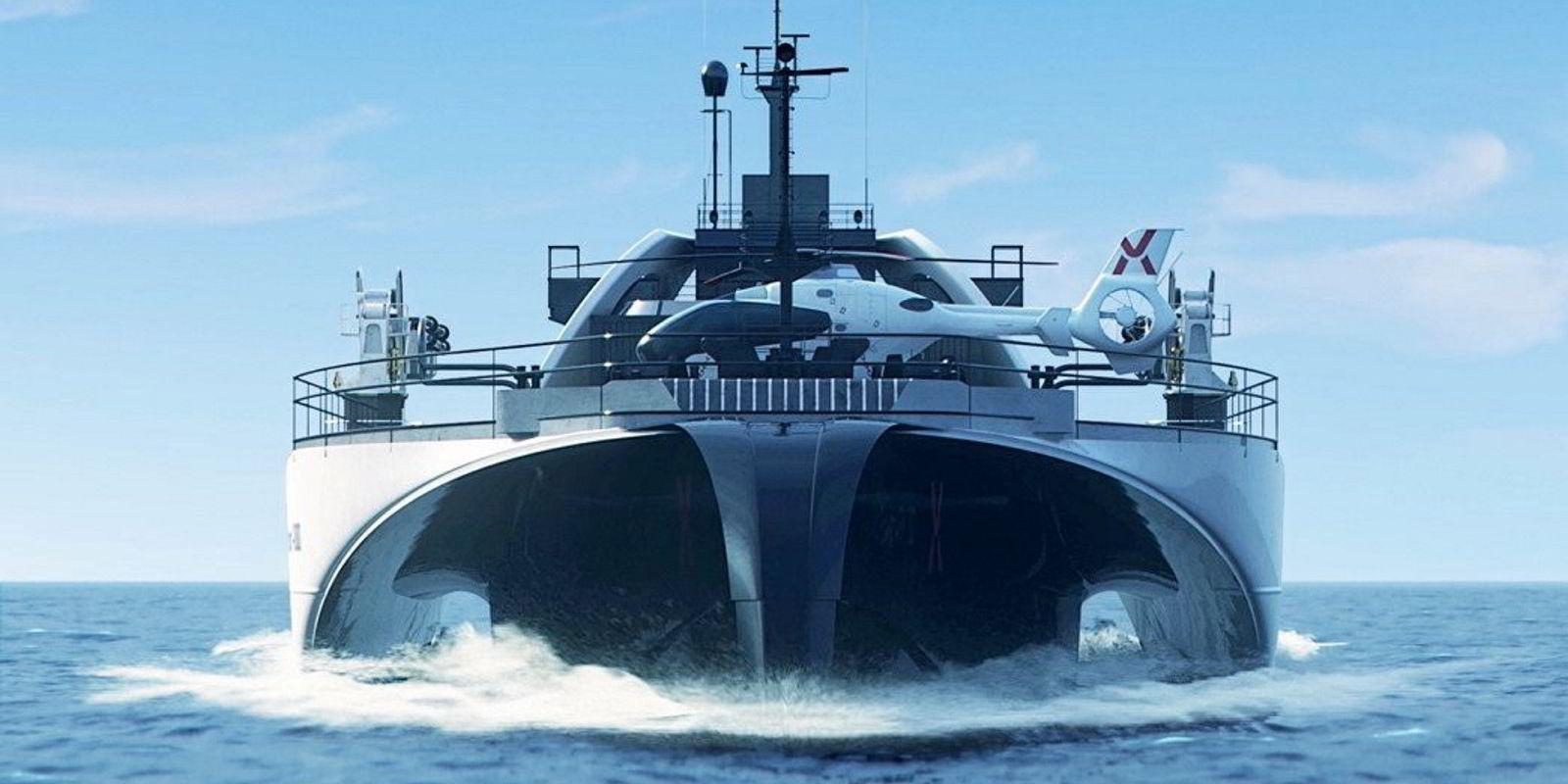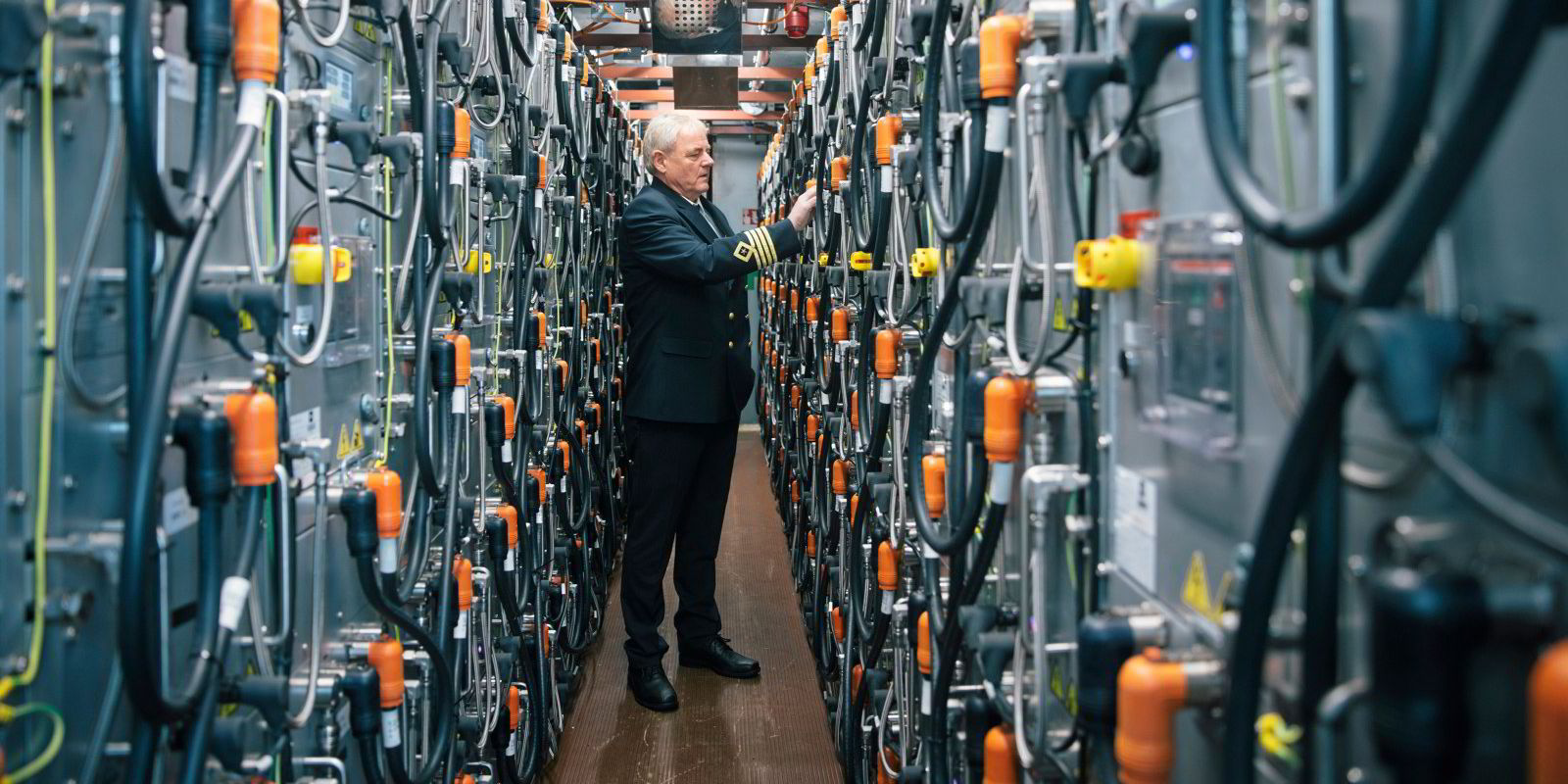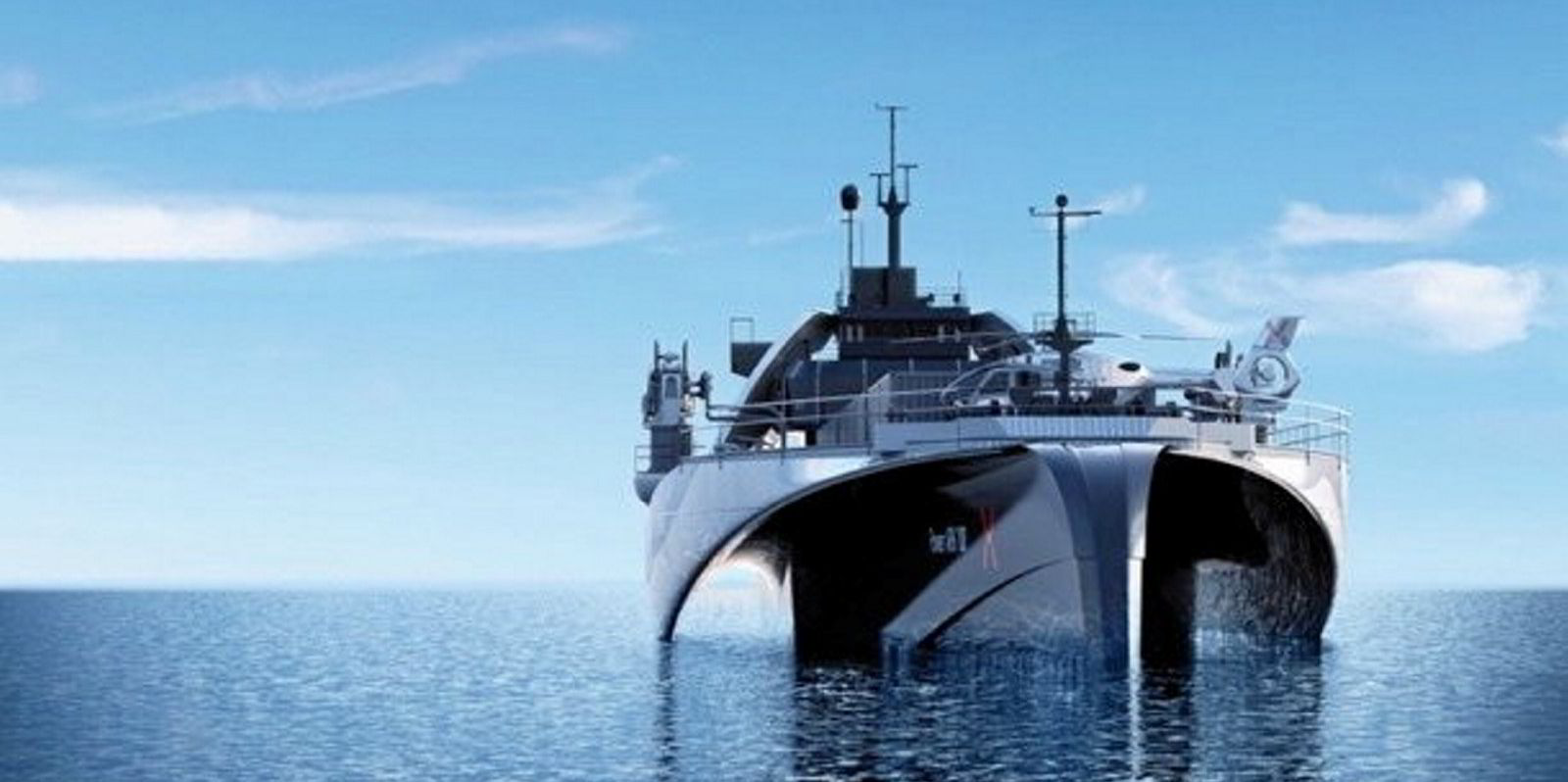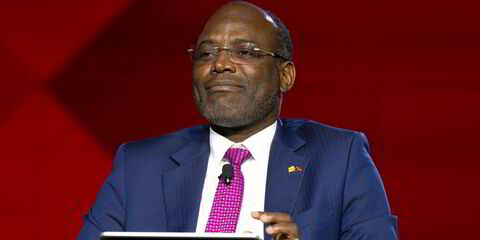At least two different Japanese-led battery technology ventures are working on projects to build “battery tankers” — ships that will ferry power from offshore wind fields to the power grid.
One project is at a much more advanced stage than the other, with heavy backing from major Japanese shipping industry players. Another is targeting access to the US financial markets through a tie-up with a blank-cheque or special purpose acquisition company (Spac).
But both projects are betting that as the energy density of battery designs increases, they will be able to add a maritime side to their present landside market, as batteries become a more credible alternative to undersea cables, and at progressively greater ranges.
Japanese battery maker PowerX recently made trade press headlines when it unveiled its Ocean Power Grid project. Ocean Power Grid plans to put a working prototype battery tanker on the water by 2025, with the backing of Imabari Shipbuilding and shipowner NYK Line.
Its planned 241-megawatt-hour ships with some 96 containerised batteries each would charge at offshore wind farms and deliver their power to the onshore grid. Former fossil fuel power plants are waiting to be converted for the purpose.
Starting with the relatively short ranges of Japan’s home market in mind, Ocean Power Grid has signed on utility company Kyushu Electric Power and the City of Yokohama as suppliers and customer for its first case.
Meanwhile, the other project, Japanese-led 3Dom Alliance, has not identified any maritime customers or target maritime trades as yet for its Singapore-based affiliate Noco-Noco.
But it has identified the Nasdaq market as its financial target, which it hopes to tap through a Chinese-funded US blank-cheque corporation called Prime Number Holding.
Prime Number is headed by online gaming entrepreneur Wang Dongfeng. Noco-Noco shareholders will continue to own over 90% of the company following the merger transaction with Prime Number, and shareholders in the Chinese-controlled Spac will acquire only about a 6.5% share at most. But the deal will give the Singapore battery venture a US Nasdaq listing.
Noco-Noco operates as a lessor of its parent 3Dom’s products. Its current customers include shoreside transportation companies such as bus lines that want to decarbonise their fleets through leasing more efficient batteries.
But the company also “[plans] to explore ... developing battery systems for the electrification of commercial vessels, and using battery tankers to transport energy from offshore farms to onshore ones,” it wrote in a recent financial filing with US securities regulators.

3Dom, which licenses its technology to Noco-Noco, specialises in a lithium battery separator technology that is supposed to make batteries lighter, higher density, longer lived and cheaper.
Noco-Noco has been approached for comment.
Enhancing energy density is frequently named as the technological key to taking maritime batteries beyond their present harbour and very short-route applications.
“You can think of a battery as the world’s heaviest and most expensive fuel tank,” commented Geir Bjorkeli, chief executive of Norwegian battery producer Corvus, whose company is not directly involved in any battery tanker projects but has studied the subject.




